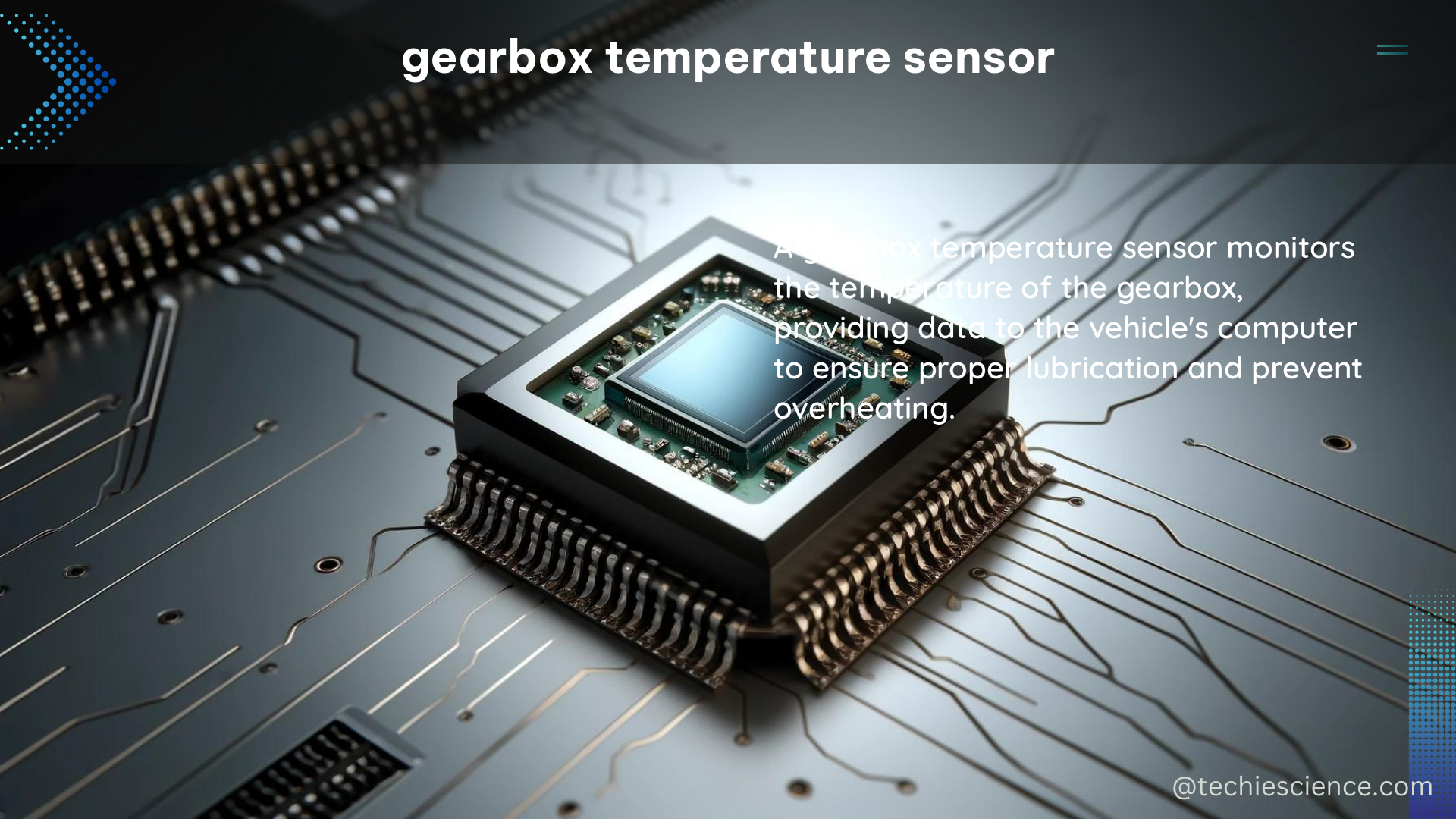The gearbox temperature sensor is a critical component in monitoring the health and performance of a gearbox. It measures the temperature of the gearbox oil, which is an indicator of the overall temperature of the gearbox. This sensor plays a crucial role in ensuring the optimal operation and longevity of the gearbox by providing valuable data to the powertrain control module (PCM).
Understanding the Gearbox Temperature Sensor
The gearbox temperature sensor is typically located in the transmission oil pan, where it has direct access to the transmission fluid. It sends a signal to the PCM, which then adjusts various transmission-related processes, such as the torque converter clutch operation and line pressure control. If the PCM detects an incorrect signal from the transmission temperature sensor, it will set a code P0710, alerting the technician to the issue.
The Thermal Network Method (TNM)

The Thermal Network Method (TNM) is a mathematical approach used to determine the heat transfer between individual components within a gearbox, as well as the heat dissipation to the environment. This method utilizes the analogy between electric current and heat flow, applying Ohm’s law to equivalent physical values. This allows the use of Kirchhoff’s circuit laws on gearbox systems, which are suitably abstracted by nodal points, forming the basis for an efficient and accurate calculation of component temperatures.
Transient Operation Conditions and Gearbox Design
The knowledge of component temperatures during transient operation conditions is essential for the optimal design of a gearbox. Critical peak temperatures can limit the transferable power and load capacity of the gearbox. Moreover, understanding the thermal behavior of the gearbox is key to improving its efficiency.
To address this, the TNM of the calculation program WTplus was extended to calculate component temperatures in gearboxes for transient operation conditions. Specifically, the TNM considers the component masses and specific heat capacities of each node modeling the gearbox structure. This enables the algorithm to compute a corresponding system of differential equations and thus determine the temperature change over time. As a result, WTplus can be used to identify critical gearbox component temperatures during load cycles, allowing for more informed design decisions.
Key Specifications and Measurements
- Gearbox temperature sensor operating range: -40°C to 150°C (-40°F to 302°F)
- Sensor resistance range: 1.6 kΩ to 19.8 kΩ
- Sensor accuracy: ±2°C (±3.6°F)
- Sensor response time: less than 1 second
- Gearbox oil temperature range: 60°C to 120°C (140°F to 248°F)
- Gearbox oil viscosity range: 10 cSt to 1000 cSt
Troubleshooting and Maintenance
- Regularly check the transmission fluid level and condition to ensure proper heat dissipation.
- Inspect the transmission fluid temperature sensor for any signs of damage or wear, such as cracks, corrosion, or loose connections.
- Use a thermal imaging camera to monitor the temperature of the gearbox and its components, identifying any hot spots or areas of concern.
- Utilize the Thermal Network Method (TNM) to calculate component temperatures in gearboxes for transient operation conditions, helping to identify critical temperatures and optimize the design.
- Regularly maintain and service the gearbox according to the manufacturer’s recommendations to ensure its longevity and optimal performance.
Conclusion
The gearbox temperature sensor is a crucial component in monitoring the health and performance of a gearbox. By understanding the principles of the Thermal Network Method (TNM) and applying it to gearbox design and maintenance, you can ensure the optimal operation and longevity of your gearbox. Remember to regularly check the sensor, monitor the gearbox temperature, and maintain the system to keep your equipment running at its best.
References:
– Smarter Sensors Let the Gearbox Tell Its Own Story
– Thermal Network Method for Transient Temperature Calculation of Gearboxes
– P0710 Code: Transmission Fluid Temperature Sensor Circuit

The lambdageeks.com Core SME Team is a group of experienced subject matter experts from diverse scientific and technical fields including Physics, Chemistry, Technology,Electronics & Electrical Engineering, Automotive, Mechanical Engineering. Our team collaborates to create high-quality, well-researched articles on a wide range of science and technology topics for the lambdageeks.com website.
All Our Senior SME are having more than 7 Years of experience in the respective fields . They are either Working Industry Professionals or assocaited With different Universities. Refer Our Authors Page to get to know About our Core SMEs.